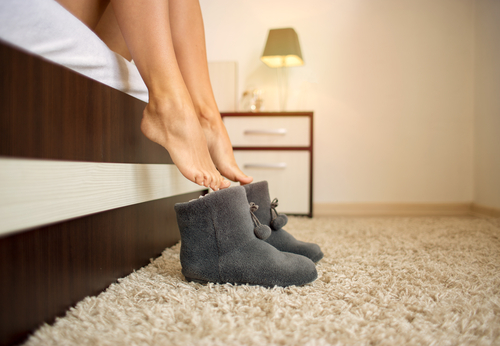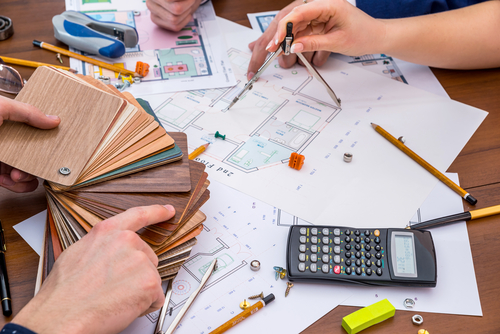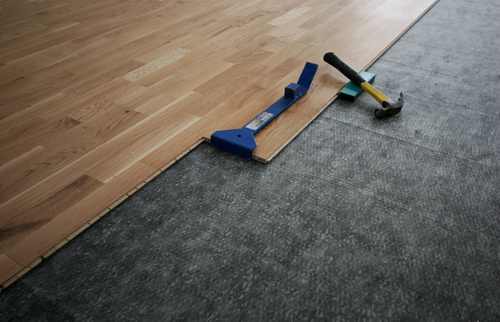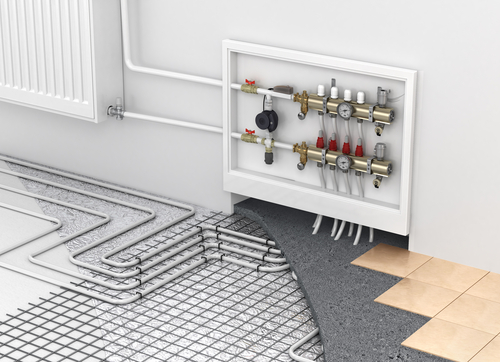
Key Takeaways
- Consider high traffic areas: Prioritize durability where foot traffic is heavy.
- Prioritize comfort: Choose flooring that feels comfortable underfoot, especially in bedrooms and living rooms.
- Evaluate costs: Scrutinize initial and the potential costs of fitting and replacement.
- Plan for the future: Anticipate changing needs over time.
- Understand underfloor heating: Ensure compatibility with chosen flooring material.
- Ease of cleaning: opt for easy maintenance.
The flooring in your home is so important. You’ll see it immediately when you step through your front door, and it will be the first thing you feel underfoot every morning. You’ll want to make sure you make the right choice. So, whether you’re considering hardwood floors, carpets throughout or matching wall and floor tiles, here are eight flooring tips to help you on your way.
1. Consider high traffic areas
Certain areas in your home will see a lot of traffic, including the stairs, entranceways and hallways.
Your choice of flooring in these spots should be durable and made to last.
Options include hardwood, good quality carpet such as twist pile, or laminate.
2. Live for that first feel in the morning

You’ll want to step from your bed onto something warm and comforting, making carpet for the bedroom an ideal choice, as it retains heat much better than hardwood for example.
For a spot of luxury and to retain that just-fitted feel, opt for something with a deep pile.
3. Decide on the look you want (and how you’ll keep it)
Once you know the look you want in your home and have a defined budget, your flooring decisions should be fairly straightforward.
One thing you’ll always need to consider is that certain floorings will give you the look you want, but they may not retain it.
For example, carpet can stain quite easily, laminate has the potential to scuff, the grout between ceramic tiles attracts dirt and can be difficult to clean and some stone can absorb stains.

4. Scrutinise the costs of fitting and replacement
A stone floor in the kitchen, or hardwood throughout the dining and sitting rooms may both create a fantastic look and feel to the home, but you’ll need to consider the complexity of the fitting.
They are much harder to fit than carpet, laminate or engineered wood. While you should always seek the assistance of professionals to fit any flooring, you’ll need the time and the budget if you go for stone or hardwood.
It’ll also be worth considering the cost involved in removing the flooring once it wears out and comes to the end of its natural life. Generally, the more complex the fitting the harder it will be to remove.
5. Think about more than just the flooring
Whether you want carpet or laminate flooring, you’ll need to ensure it is fitted with a good quality underlay.
This will help the flooring retain its bounce, and make sure it doesn’t have too much pressure against the hard sub-floor, which will cause it to wear much quicker.
Underlay can also work as sound insulation, and a high-quality option could help to reduce the sound of footsteps when used on an upper floor.

6. Evaluate how your needs might change
A beige deep pile carpet in the sitting room and stone in the kitchen might seem like a great choice when you first move in and give you a home you’re proud of.
They might not be so practical for little children running around.
Remember, all situations are workable so don’t worry too much at this stage, but it is always worth considering your future home plans when getting the flooring fitted.
7. Investigate compatibility with underfloor heating
If you plan on installing underfloor heating in your home, you’ll need to investigate the compatibility with your chosen flooring.
For example, the most compatible is either stone or ceramic tiles.
If you plan on installing carpet as well as underfloor heating, you’ll need to be sure that the combined tog rating of the carpet and the underlay doesn’t exceed 2.5.
It’s worthwhile checking with the supplier of the carpet and the heating system.

8. Assess if you can keep it clean
If yours is a household of mess-prone toddlers or excitable pets, you’ll need whatever you choose to stand up to the pressures of daily life.
You won’t want to be deep cleaning your carpets constantly, so reflect on whether a stain-resistant and easy-to-clean option might be better suited.
If you conclude a particular type of flooring is going to be too much work to maintain, go for a hard-wearing option like tile or wood.


